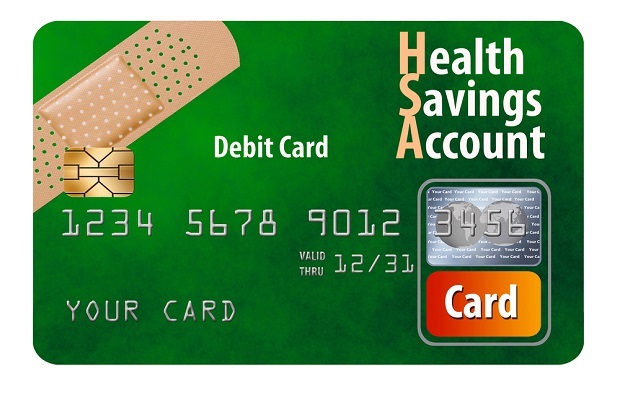The rapid spread of COVID-19 has emerged as one of the biggesthealth crises of our time, with plenty of uncertainty still tocome. In response, many American families have turned toself-funded health care benefits like flexible spending accounts(FSAs) and health savings accounts (HSAs) to purchaseover-the-counter medicines to prevent and manage symptoms, butuntil recently, these medicine cabinet staples required aprescription for purchase. That left consumers with a difficultchoice: Pay out-of-pocket for OTC medicines and possibly let theirtax-free funds go to waste, or take the unnecessary risk and addedcost of going to the doctor's office to obtain a prescription.
|Thankfully, the passage of the CARES Act reverses this law andeliminates the dilemma. As open enrollment season approaches,employers and benefits managers can pave the way to increased FSAand HSA participation and a better employee experience with alittle education about the new changes to eligibility and theconvenience and savings they deliver.
|Here are three key things all employees should know about therecent CARES Act as it relates to their tax-free funds.
|1. Highlight expanded product eligibility
OTC medications. The CARES Act included tworevolutionary provisions for FSAs and HSAs: the waiver of therequirement to obtain prescriptions for OTC medicines, and theinclusion of menstrual care products as FSA/HSA eligibleexpenses. This is significant because eligibility of OTCmedications has consistently been one of the most-asked questionsand an area of confusion for account holders of all ages.
|Why does it matter? OTC medications areespecially relevant today, as they may be used to treat thesymptoms of COVID-19, as well as other health concerns like painrelief, cold and flu season, and seasonal allergies. In fact, salesfor OTC medications reached $35.2 billion in 2018, andrecommendations that consumers keep at least a one-month supply ofOTC pain medications on hand to treat flu symptoms is increasingdemand for these products.
|We have seen first hand the rapid spike in sales forproducts associated with coronavirus preparedness. Purchases offirst-aid products, thermometers, nasal saline solution, vaporizersand other eligible cold and flu products more than quadrupled inthe second half of February and have been on a steady increasesince news of the COVID-19 broke in early January. With moreAmerican families factoring OTC medications into their yearlyhealth care spending, this could be a big driver of new FSA/HSAenrollment.
|Feminine products for menstrual care. Foryears, organizations and individuals have been advocating to havefeminine products like tampons and pads included as eligible FSAand HSA items. Finally, those efforts have paid off and theseessential products can now be purchased with tax-advantageddollars.
|Why does it matter? In 2017, there were morethan 165 million women in the United States, compared to just over159 million men. By 2020, it's projected there will be over 174million women and 167 million men. This growing demographic willspend an estimated $4,752 over their lifetime on tampons and pads,which doesn't account for related products women buy during theapproximately 396 months of their life when they have theirperiod.
|Because women continue to be a primary influencer in determiningenrollment in and utilization of health benefits and supplementalbenefits, like spending accounts, this change makes FSAs and HSAsmuch more valuable to working professionals.
|2. Demonstrate potential tax savings
One of the central benefits of an FSA/HSA is reducing yourtaxable income by self-funding your account through regular payrolldeductions. With far more products available to purchase than everbefore, account holders may take a closer look at their yearlycontributions. The CARES Act opens up future savings opportunitiesfor working professionals and their families by allowing them topay for these expenses with tax-advantaged funds and save hundredsin payroll taxes.
|Why does it matter? For example, a family whomakes the median U.S. household income ($63.688), who fully fundsan FSA to the 2020 contribution limit ($2,750) should save about$1,000 or more in payroll taxes over the course of the year. Forthose who may have avoided these accounts or simply lightly fundedthem in the past, the ability to save on thousands of new itemscould change how FSA users fund their accounts in the nearfuture.
|Employers should make resources available like calculators andother spending tools so workers can assess their health spendingand possible tax savings.
|3. Communicate and provide tools
While these welcome changes to FSAs/HSAs provide greater valueto employees, the onus is on employers to communicate these changesand help new and returning account holders take full advantage oftheir benefits.
|If employers have created their own account tools or educationalsupplements, now is the time to update them.
|If working with vendor-supplied tools, ask these partners toupdate all tools and communications to reflect the newly eligibleproducts and savings potential. Such educational aides areessential to helping employees make informed decisions about theirfinances and their health.
|Employees and families who rely on spending accountcontributions to carry them through times of crisis, when normalincome may be reduced or strained, are sure to appreciate theoption to enroll in and benefit from these changes. Don't miss outon an opportunity to help them support their health and well-being— while saving money — throughout the year.
|Rachel Rouleau, CFCI, is ComplianceDirector for Health-E Commerce, the parent brand of FSAstore.com,HSAstore.com, WellDeservedHealth.com, and Caring Mill.
Complete your profile to continue reading and get FREE access to BenefitsPRO, part of your ALM digital membership.
Your access to unlimited BenefitsPRO content isn’t changing.
Once you are an ALM digital member, you’ll receive:
- Critical BenefitsPRO information including cutting edge post-reform success strategies, access to educational webcasts and videos, resources from industry leaders, and informative Newsletters.
- Exclusive discounts on ALM, BenefitsPRO magazine and BenefitsPRO.com events
- Access to other award-winning ALM websites including ThinkAdvisor.com and Law.com
Already have an account? Sign In
© 2024 ALM Global, LLC, All Rights Reserved. Request academic re-use from www.copyright.com. All other uses, submit a request to [email protected]. For more information visit Asset & Logo Licensing.




